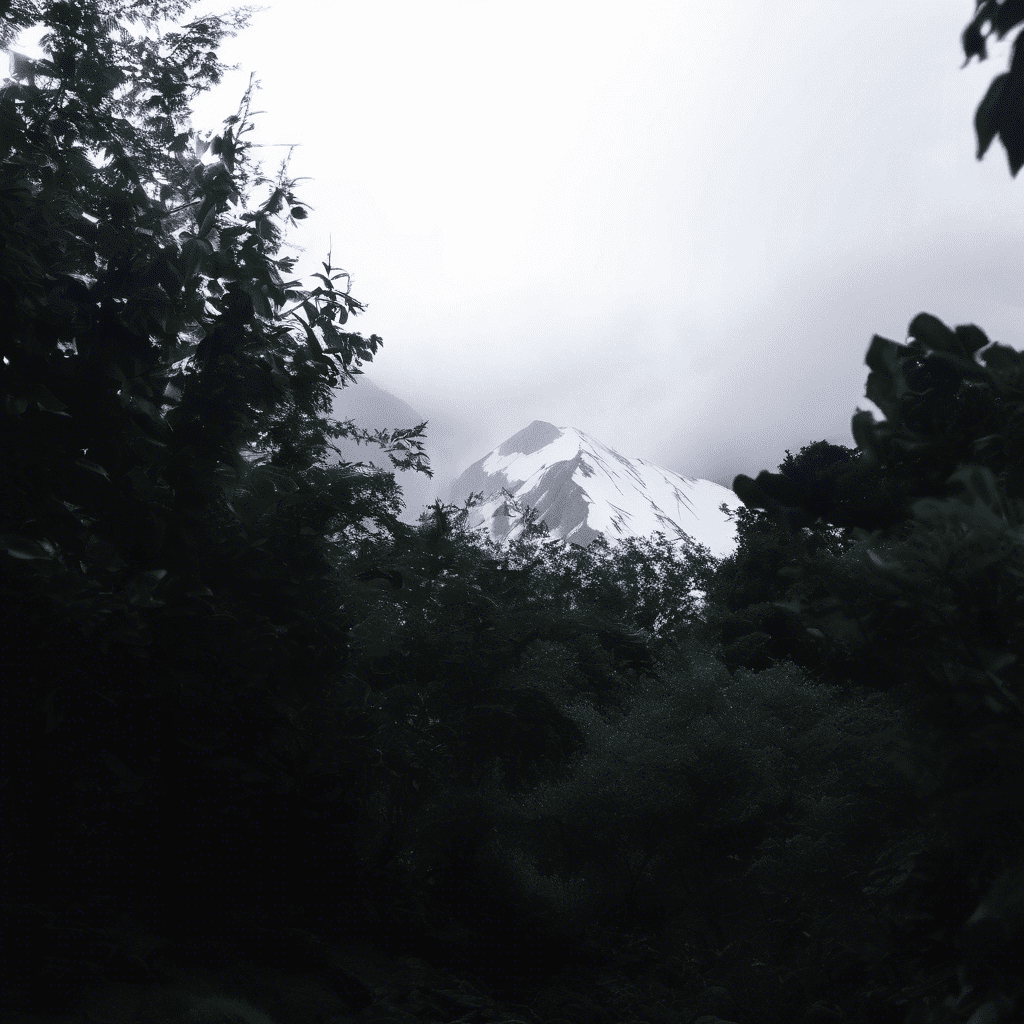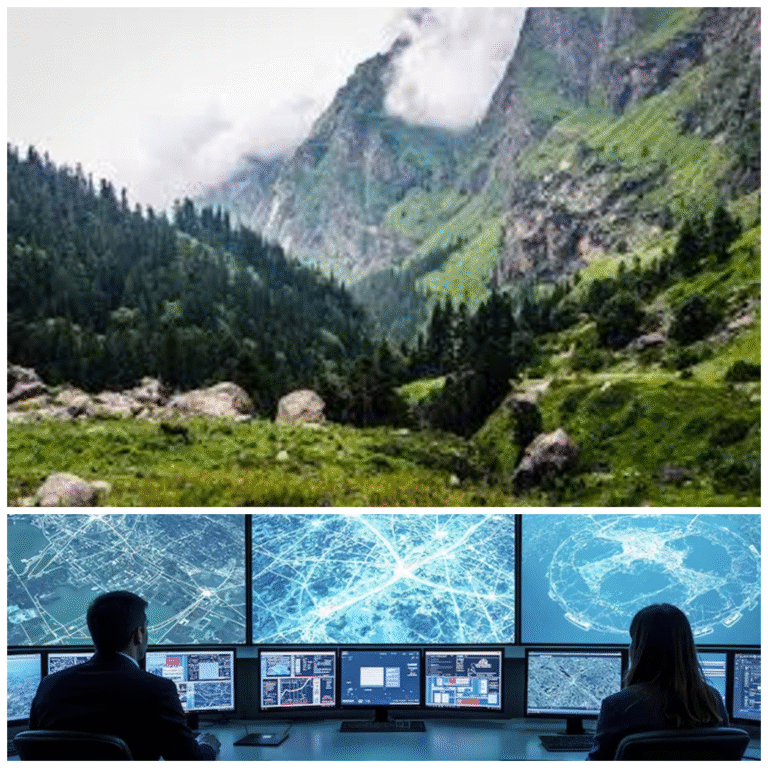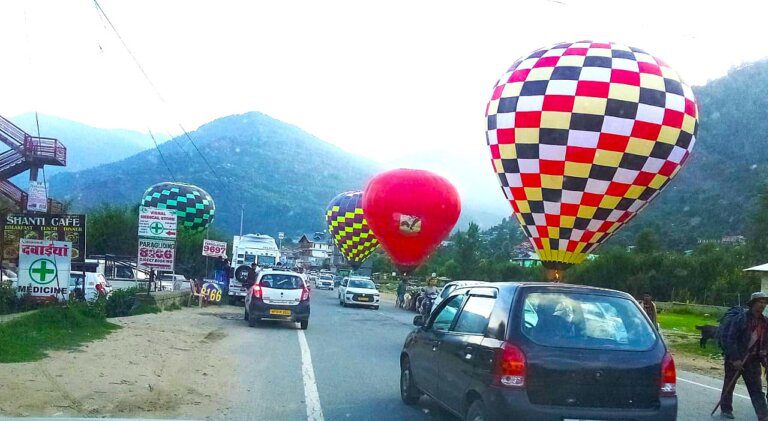
In the heart of the Himalayas lies a place where nature paints its most serene masterpiece — Manali, Himachal Pradesh. As the rest of India swelters under the scorching summer sun, Manali offers a cool embrace, a breath of fresh mountain air, and vistas that seem almost otherworldly. It’s in this contrast that the true magic of Manali reveals itself — especially in June, when the snow-capped peaks peek through the clouds, creating an ethereal landscape that feels like paradise on Earth.
Today, as I stood with my camera in hand, capturing the view from one of Manali’s many vantage points, I was reminded once again why this place holds such a special place in the hearts of travelers and locals alike. The mountains, still crowned with snow, stood tall beneath a sky painted with soft, drifting clouds. The scene was so breathtaking that it seemed almost cinematic — yet it was real, raw, and right in front of me.
But while I was lost in the beauty of the moment, I couldn’t help but think about how often the world sees only the darker side of Himachal Pradesh. Floods, landslides, cloud bursts — these are the headlines that dominate news cycles and social media discussions. And yes, they are real. They do happen. But what often gets missed in these narratives is the bigger picture — one that includes not just the risks, but also the resilience, the beauty, and the need for proactive awareness rather than reactive fear.
A Different Side of June: Cool Climates and Captivating Views
While much of India braces for the peak of summer heat and humidity in June, Manali becomes a haven for those seeking respite. With temperatures hovering between 15°C and 25°C, the town offers a refreshing escape from the chaos below. The lush greenery of the valley comes alive after the last whispers of winter snow melt away, and the rivers flow with renewed vigor.
What makes June particularly special is the presence of snow on the higher peaks, juxtaposed against the emerging summer bloom at lower altitudes. The sight of snow-laden mountains framed by fluffy white clouds creates a surreal panorama — one that can only be experienced in a place like Manali.
Tourists begin to pour in during this time, drawn by the promise of adventure, tranquility, and unmatched natural beauty. Treks to Rohtang Pass, Solang Valley, and Hadimba Temple become popular, offering both thrill and spiritual solace. For photographers, painters, and dreamers, June is perhaps the most photogenic month in Manali — a time when every corner tells a story, and every frame captures a memory.
The Other Side of the Story: Natural Disasters and Media Narratives
Despite its charm, Manali and the wider region of Himachal Pradesh have increasingly found themselves in the spotlight for reasons far less pleasant. News reports frequently highlight incidents of cloudbursts, flash floods, and landslides — events that are indeed tragic and demand immediate attention. However, these occurrences are not unique to Himachal Pradesh alone.
Natural disasters can strike anywhere. From cyclones in Odisha to earthquakes in Gujarat, from floods in Kerala to landslides in Uttarakhand — no part of India is entirely immune. Yet, the way these events are reported often leaves a skewed perception, painting entire regions as “danger zones” or “unsafe destinations.”
This kind of narrative does more harm than good. It deters tourism, impacts local livelihoods, and fosters a sense of fear rather than understanding. While it’s essential to acknowledge the risks associated with living in a geologically active and climatically sensitive region like the Himalayas, it’s equally important to talk about preparedness, adaptation, and resilience.
Disaster Management: A Collective Responsibility
Instead of focusing solely on the negative, we must shift our attention to building awareness and capacity for disaster management — not just in Himachal Pradesh, but across the country. This includes:
- Early Warning Systems : Investing in technology that provides timely alerts for weather-related disasters.
- Community Preparedness : Educating local communities about evacuation routes, emergency shelters, and basic survival techniques.
- Infrastructure Planning : Ensuring that roads, bridges, and buildings are constructed with environmental sustainability and safety in mind.
- Environmental Conservation : Promoting afforestation, controlling deforestation, and managing waste responsibly to reduce ecological vulnerabilities.
- Media Ethics : Encouraging responsible reporting that highlights solutions and community efforts, rather than sensationalizing tragedies.
By doing this, we move beyond fear-based narratives and empower people with knowledge. We create a culture of readiness, not panic.
Celebrating the Real Himachal: Beyond Headlines and Stereotypes
To truly understand Himachal Pradesh — and Manali in particular — one must go beyond the headlines. There’s a quiet strength in the people here, a deep connection to the land, and a spirit of perseverance that defines life in the mountains.
The same mountains that occasionally cause landslides also offer breathtaking views that heal the soul. The same rains that sometimes lead to floods also nourish the soil and sustain agriculture. The same winds that roar through valleys also carry the songs of ancient temples and the laughter of children playing in the streets.
Himachal is not a place to fear — it’s a place to respect, cherish, and protect. Its beauty is undeniable, and its people are resilient. To visit Manali is not just to see a destination; it’s to experience a way of life that teaches humility, patience, and harmony with nature.
Let’s Redefine the Narrative
As I packed up my camera today, I felt a renewed sense of purpose. Yes, the clouds may bring rain, and the mountains may tremble — but life goes on in Manali, vibrant and full of hope. It’s time we start telling the whole story — one that balances the challenges with the triumphs, the dangers with the dreams.
Let us not forget the beauty that exists even amidst adversity. Let us spread awareness, not alarmism. Let us celebrate Manali not just as a tourist destination, but as a symbol of nature’s grandeur and human resilience.
Because in the end, paradise isn’t a place without risk — it’s a place worth protecting.





